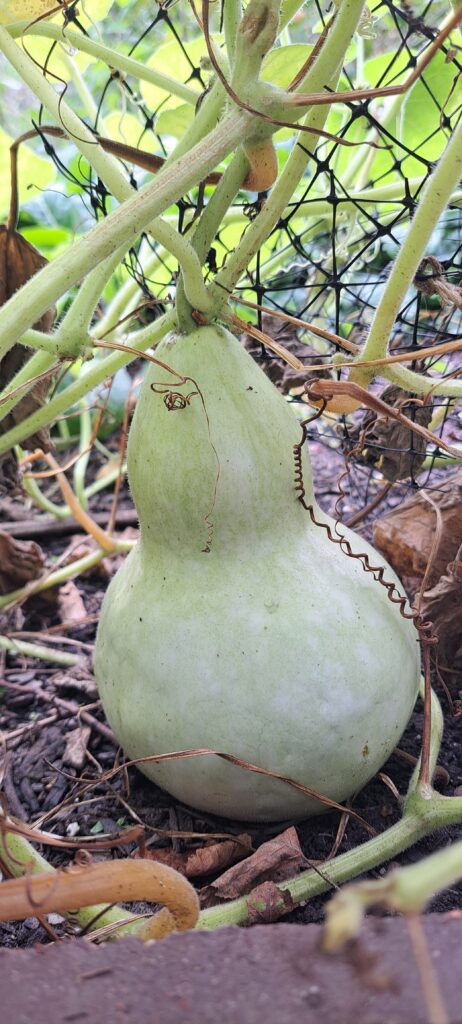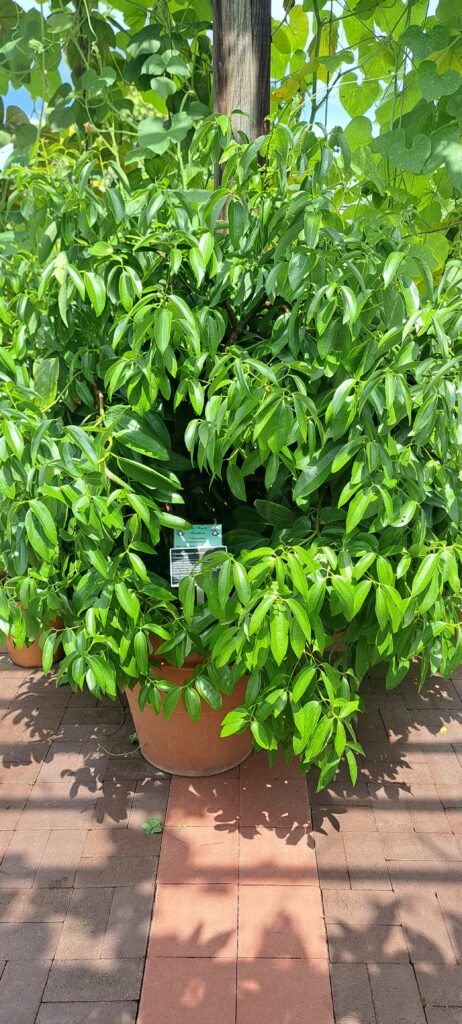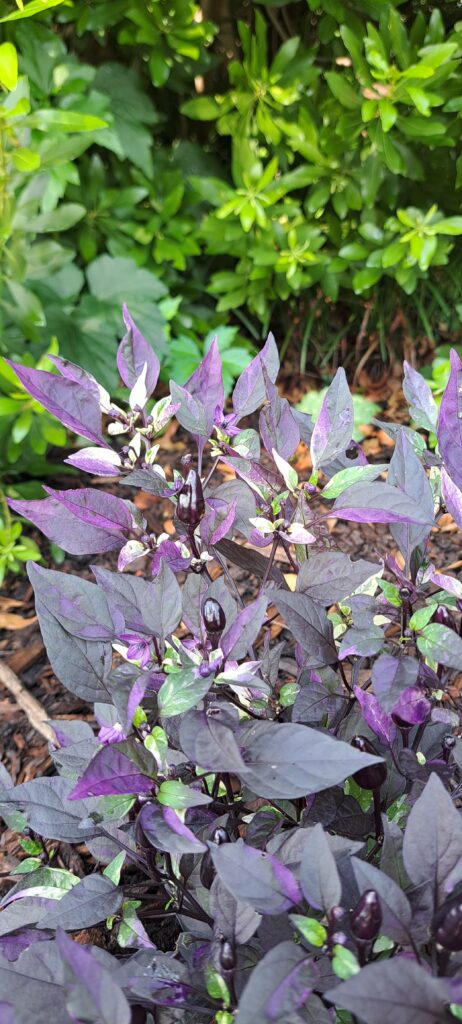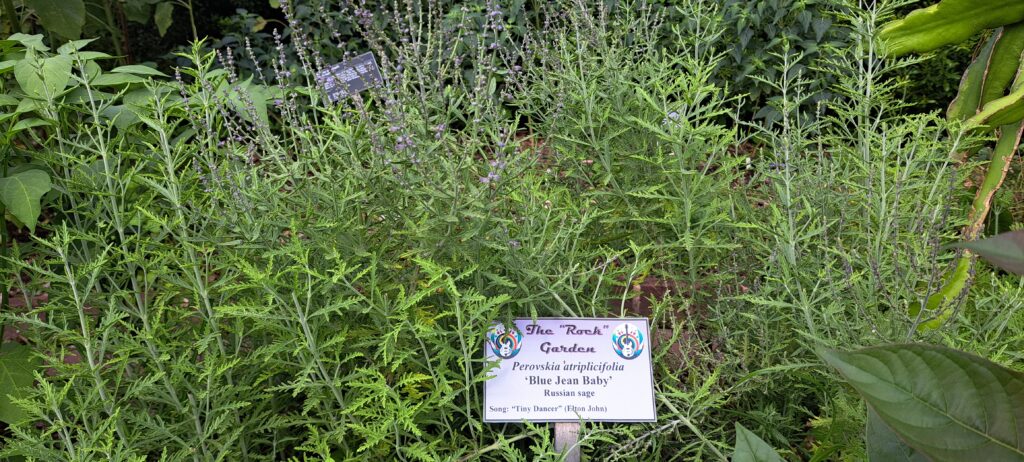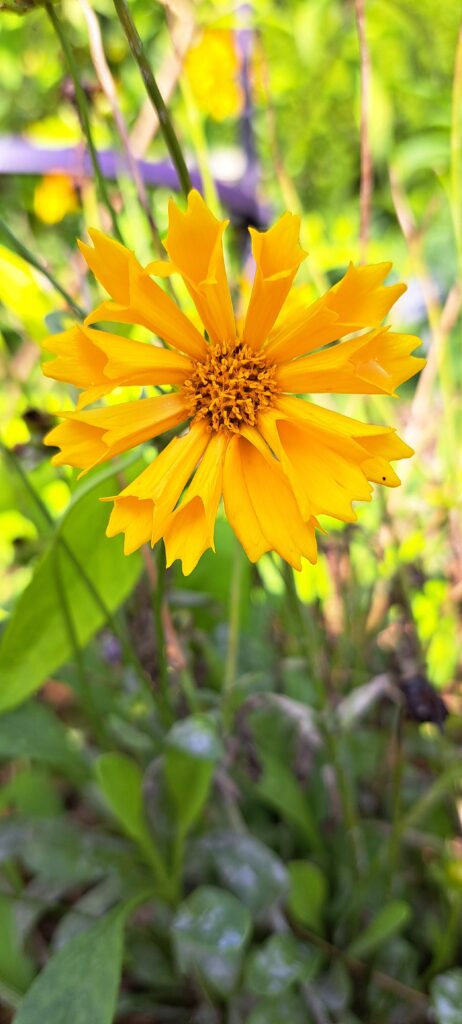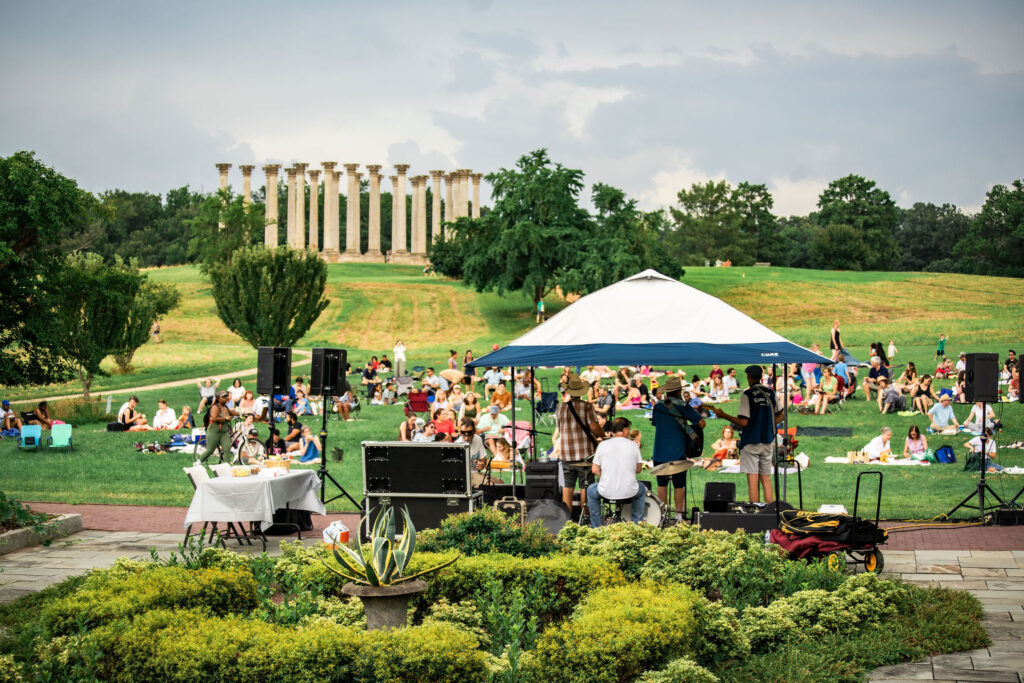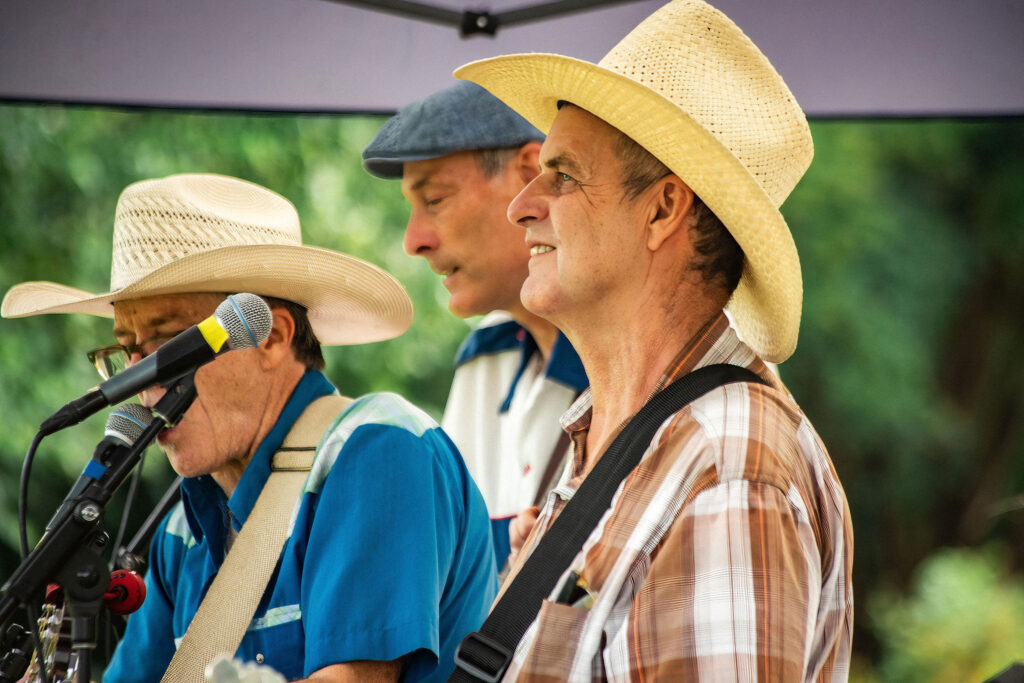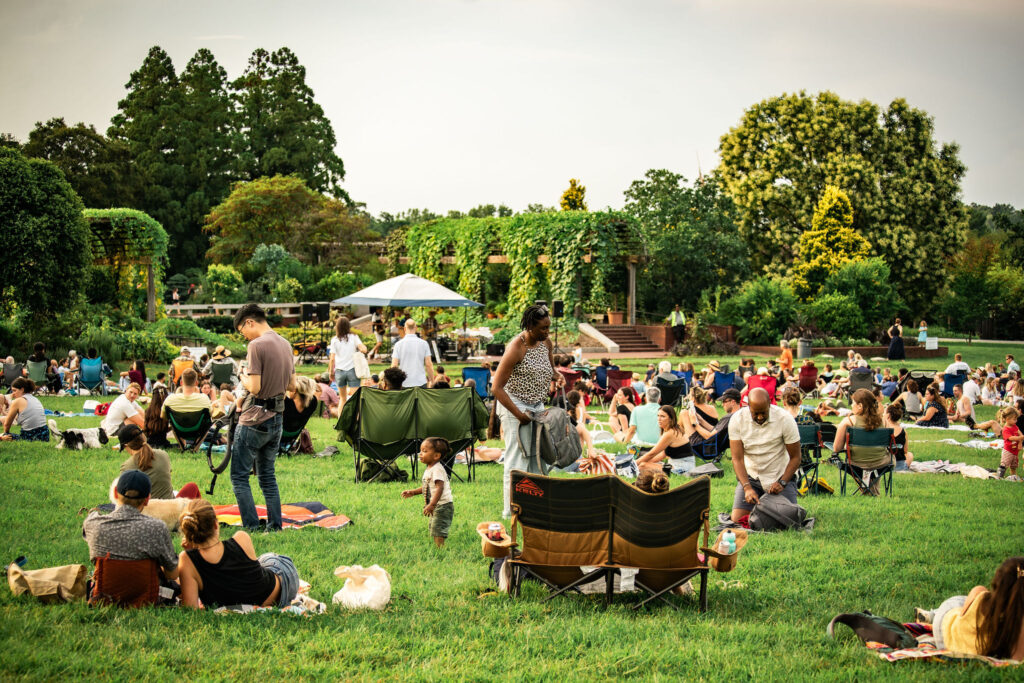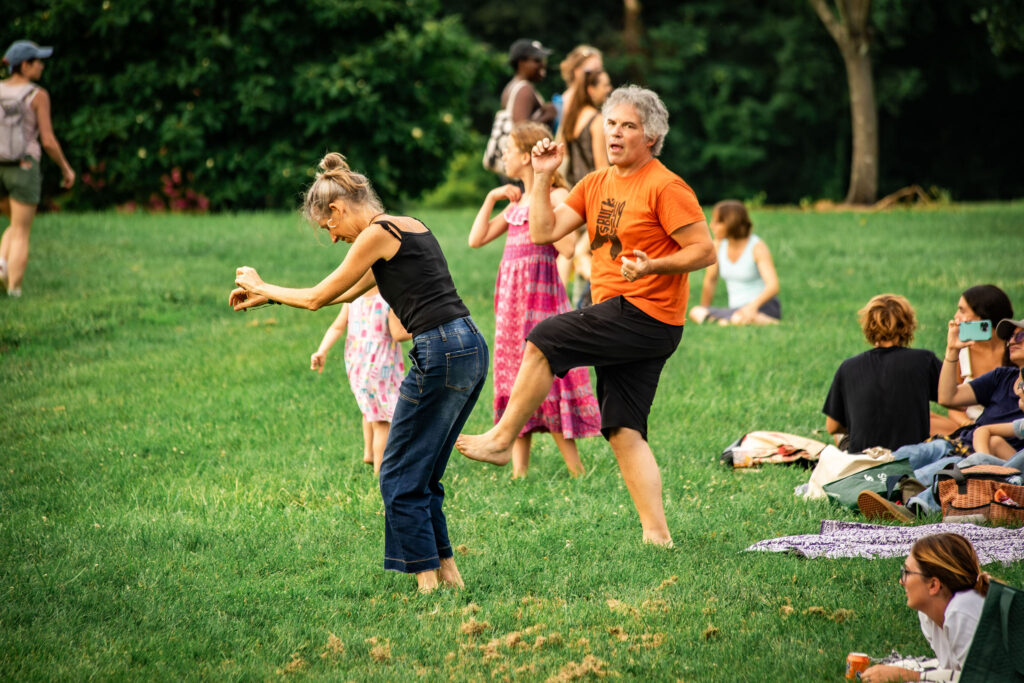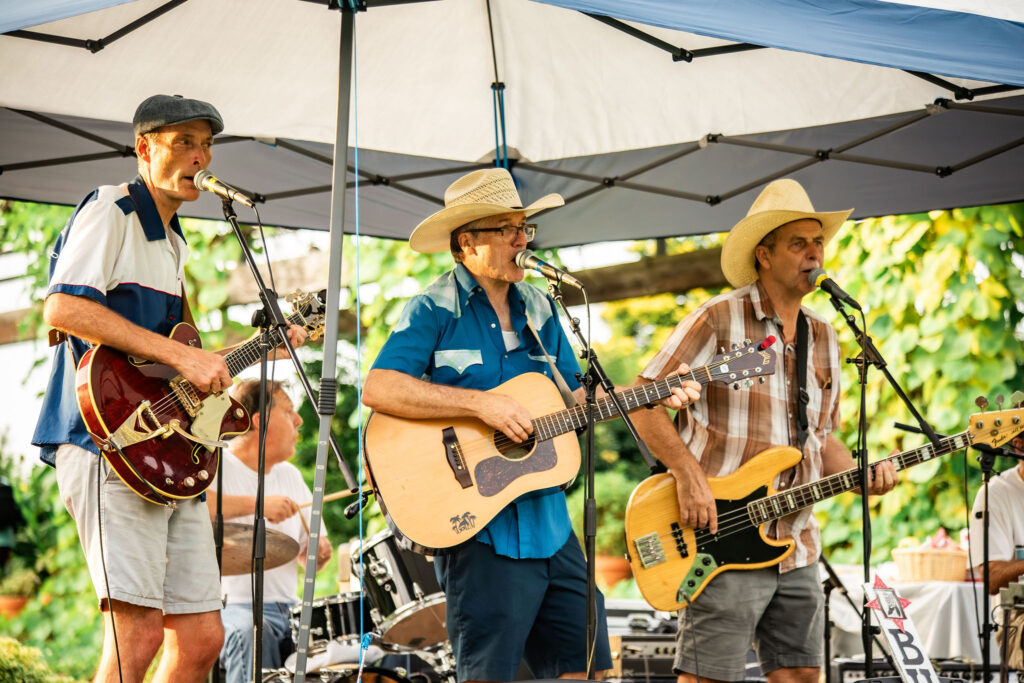
The National Herb Garden “Rock” Garden: A Musical Twist on Botanical Splendor
Step into the National Herb Garden this summer and you’ll find an innovative homage to both nature and music. The inaugural “Rock” Garden is a playful, creative theme exhibit imagined by Erin Holden, staff gardener at the U.S. National Arboretum’s National Herb Garden.
The Inspiration
While browsing plant catalogues one evening, Erin stumbled upon Coreopsis ‘Jethro Tull’, a fluted-petaled cultivar that she assumed was named after the seventies rock band. (Read on to find out who it was really named after.) This moment sparked a cheeky but inspired idea: why not curate a Rock (’n’ Roll) Garden featuring herbs and other plants that connect to music — in name, use, or lore? Thus was born this year’s themed display at the entrance to the National Herb Garden. The exhibit will run through the fall.
What Makes the Garden “Rock”
Erin shares that she and the National Herb Garden team had a blast curating plants for the exhibit. “This year’s display has been a few years in the making. It’s been fun to combine two of my passions: plants and music. The best part has been listening to visitors’ reactions — some of them download the companion playlist on Spotify and then have a scavenger hunt, looking for each plant on the list, while others start singing their favorite plant-related song.” The exhibit aligns music and plants across three categories:
Used for Musical Instruments
- Plants like bamboo, certain gourds, and trees used for stringed instruments offer a nod to the natural materials behind traditional folk instruments across many cultures. The calabash Lagenaria siceraria, or bottle gourd, is widely used to create a variety of instruments. Its dried, hollowed-out fruits serve as resonators for stringed instruments, bodies for drums, and shells for rattles. Additionally, they form the wind chamber for mouth organs and are incorporated into shakers like the shekere. The calabash is a member of the Cucurbitaceae family, to which cucumber, zucchini, a variety of melons, the venerable pumpkin, and many other plants that look like squash all belong. The wood of the California bay laurel tree (Umbellularia californica), also known as Oregon Myrtle, has been used in guitar making for many years.
Cited in Songs (titles or lyrics)
- Neil Young yearns for his “Cinnamon Girl” on his 1969 album Everybody Knows This Is Nowhere. Cinnamon, the spice for cooking and flavouring, has long been prized by and influenced many cultures globally. It is derived from the dried and ground inner bark of the Ceylon cinnamon (Cinnamomum verum) tree, a small to medium-sized evergreen tree belonging to the family Lauraceae. It is native to Sri Lanka. Also known as true cinnamon, its bark, leaves, and flowers are aromatic. In Southeast Asia, cinnamon has played an integral role in spiritual ceremonies and cuisine. Cinnamon, along with other spices, was traded along various routes connecting Asia, the Middle East, Africa, and Europe. During medieval times in Europe, the sought-after spice symbolized wealth and status. Cinnamon verum trees thrive in warm, humid climates with well-drained, moist soil. USNA staff move this container plant into the greenhouse in the winter.
- Perovskia atriplicifolia ‘Blue Jean Baby,’ a Russian sage cultivar, is known for being a more compact and less floppy version of the plant. This makes it a more appealing option for smaller gardens and landscapes. The name of this plant is a bit of a twist on the lyrics of Elton John’s “Tiny Dancer” song that captures the essence of free-spirited and bohemian Californian women he encountered during his early tours in the United States. This heat- and drought-tolerant show-stopper blooms on gray-green, aromatic foliage. One of the earliest Perovskia to bloom, ‘Blue Jean Baby’ is a lot more than a seamstress for the band.
- Multiple plants pay tribute to Prince’s 1984 album Purple Rain and its iconic song of the same name. Salvia verticillata ‘Purple Rain’ is an ornate perennial with closely-spaced whorls of tiny two-lipped, warm rosy-purple bracts with small violet-blue flowers. These showy blooms adorn upright reddish stems, thrive in full sun, and are a magnet for pollinators. The Capsisum annum ‘Purple Rain’ is an ornamental pepper that was released in 2025 by USDA researchers. This small-statured powerhouse boasts unique purple and black variegated foliage with green and white highlights. It can be used wherever sunny annuals are planted and is especially well-suited as an accent in container plantings. ‘Purple Rain’ has staying power, holding its fruit and foliage through the fall.
Named After Musicians
- The inspiration for the exhibit, the coreopsis ‘Jethro Tull’ is named after the English agricultural pioneer Jethro Tull, not the rock band. But the eponymous coreopsis does have several things in common with the 70’s rock band. Flute playing is central to the band Jethro Tull’s sound, while this coreopsis is renowned for its fluted brilliant golden-yellow petals. This cultivar of tickseed (as coreopsis is commonly known) is a compact, mounding perennial that blooms all summer long, providing long-lasting enjoyment… just like a Jethro Tull song! “What a sight for my eyes” this plant is: drought tolerant, deer resistant, prolific flowers, and easy to grow.
- The exhibit celebrates the late 1960’s American rock band Iron Butterfly with Vernonia lettermanii ‘Iron Butterfly.’ This plant earned its name because of its tough, adaptable nature and ability to attract butterflies, among other pollinators. Commonly called Letterman’s ironweed or narrowleaf ironweed, this vigorous perennial has a compact, densely mounding habit and is known for its showy, late summer bloom of bright, true purple flowers. The ‘Iron Butterfly’ is native to rocky outcrops and floodplains in west-central Arkansas and adjacent Oklahoma. It prefers full sun and well-drained soil, but can tolerate various soil conditions, including dry, rocky, and even occasional flooding.
Come Rock Out!
To celebrate the spirit of this rock music garden, Friends of the National Arboretum (FONA) will host a live Music in the Meadow concert on September 5th from 7 PM to 8:30 PM in the meadow adjacent to the National Herb Garden. The Route 66 Band will play a medley of songs that pay homage to the “Rock” Garden theme. Local musicians will also showcase instruments crafted from plants, and there will even be a “musical instrument petting zoo” for you to explore.
Tickets are required to attend this event. General admission costs $25 ($20 for FONA members), and a limited number of $15 community discount tickets are available. Children aged 12 and under can attend for free, but they must have a ticket.
If you want to get your groove on now, Erin also created a companion playlist on Spotify that features herbs represented in the garden, as well as other plant-related tunes.
As part of FONA’s ongoing partnership with the U.S. National Arboretum, this concert is one of many engaging programs designed to inspire the public to enjoy the Arboretum in new and exciting ways. Visitors will be able to stroll through the Rock Garden, enjoy music under the late summer sky, and discover how plants and culture harmonize.
Buck Forty Nine recently played a Music in the Meadow concert in July 2025. Photos by Zak Khaliqi. Click to view each photo in full screen.
Special thanks to Erin Holden for the creative spark and FONA’s continued partnership with the National Herb Garden.
Bridget DeSimone is a communications consultant and writer for Friends of the National Arboretum. She is an experienced public relations professional and journalist who has worked extensively with scientific researchers and nonprofit organizations.


